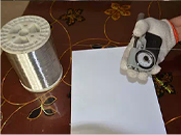Aug . 12, 2024 20:26 Back to list
Innovative Wire Net Machines Revolutionizing Industrial Production and Streamlining Manufacturing Processes Efficiently
The Evolution and Impact of Famous Wire Net Machines
Wire net machines have become an essential part of various industries, ranging from agriculture to construction and even the automotive sector. These machines are designed to produce wire mesh, a versatile product that finds applications in numerous fields. As technology has advanced, so too have the capabilities of wire net machines, evolving from simple manual tools to sophisticated automated systems. This article explores the evolution, significance, and future prospects of famous wire net machines.
Historical Development
The origins of wire net machines can be traced back to the 19th century when wire weaving was primarily performed by hand. Artisans would painstakingly weave wires together to create simple mesh products used in fencing, filtration, and other basic applications. The introduction of mechanized weaving in the late 1800s revolutionized the industry. With the advent of steam engines and electricity, manufacturers could produce wire mesh faster and more consistently.
Over the decades, various inventors contributed to the development of more advanced wire net machines. In particular, the introduction of automatic mesh welding machines in the mid-20th century marked a significant milestone. These machines enabled users to produce large quantities of welded wire mesh, which quickly became popular in construction, agriculture, and even household applications such as garden fencing.
Modern Innovations
Today, wire net machines come equipped with cutting-edge technology that enhances their productivity and versatility. Modern machines feature automated processes, allowing for precision in wire cutting, welding, and mesh production. Computer Numerical Control (CNC) technology plays a significant role in these advancements, enabling machines to perform complex designs with unparalleled accuracy.
One of the most notable features of contemporary wire net machines is their ability to produce a variety of mesh types, including hexagonal, square, and decorative meshes. This flexibility allows manufacturers to cater to a broader range of industries. For instance, fine wire mesh is essential in industries like aerospace and automotive for filtering and structural applications, while heavier meshes are often utilized in construction for reinforcement.
famous wire net machine

Environmental Considerations
As the world becomes increasingly aware of the importance of sustainability, many manufacturers are adopting eco-friendly practices in the production of wire net machines. Innovations include energy-efficient technologies and the use of recyclable materials. Moreover, advancements in digital technologies are leading to smarter production techniques that minimize waste and resource consumption.
The push for sustainability has also led to the development of machines that can produce wire mesh from recycled materials. This not only reduces the environmental impact of wire production but also appeals to consumers and industries that prioritize green practices.
Future Prospects
The future of wire net machines looks promising as the demand for wire mesh products continues to grow. Industries across the globe are expanding, and with them, the need for reliable and versatile wire net solutions. Emerging markets, particularly in Asia-Pacific and Africa, present new opportunities for growth in the wire mesh sector.
Moreover, with the ongoing advancements in robotics and automation, wire net machines are likely to become even more efficient and capable. Future machines may feature artificial intelligence (AI) components that allow for predictive maintenance, ensuring machines operate at optimal levels and reducing downtime.
Conclusion
Famous wire net machines have come a long way from their humble beginnings as hand-woven tools. The evolution from manual to automated production has reshaped the landscape of multiple industries, making wire mesh more accessible and versatile than ever. With an eye towards sustainability and technological advancements, the future of wire net machines appears bright, promising continued innovation and expanded applications for this essential product.
share
-
CE Certified 250 Micron Stainless Steel Mesh | Precision & Durability
NewsAug.27,2025
-
CE Certified 250 Micron Stainless Steel Mesh for Precision & Durability
NewsAug.26,2025
-
CE Certified 250 Micron Stainless Steel Mesh for Precision & Durability
NewsAug.25,2025
-
Premium CE Certified Metal Fine Mesh for Precision & Safety
NewsAug.24,2025
-
Stainless Steel Wedge Wire Mesh: Durable, Precision Filtration
NewsAug.23,2025
-
CE Certified 250 Micron Stainless Steel Mesh for Precision Filtration
NewsAug.22,2025

